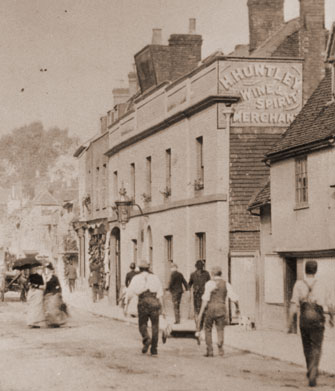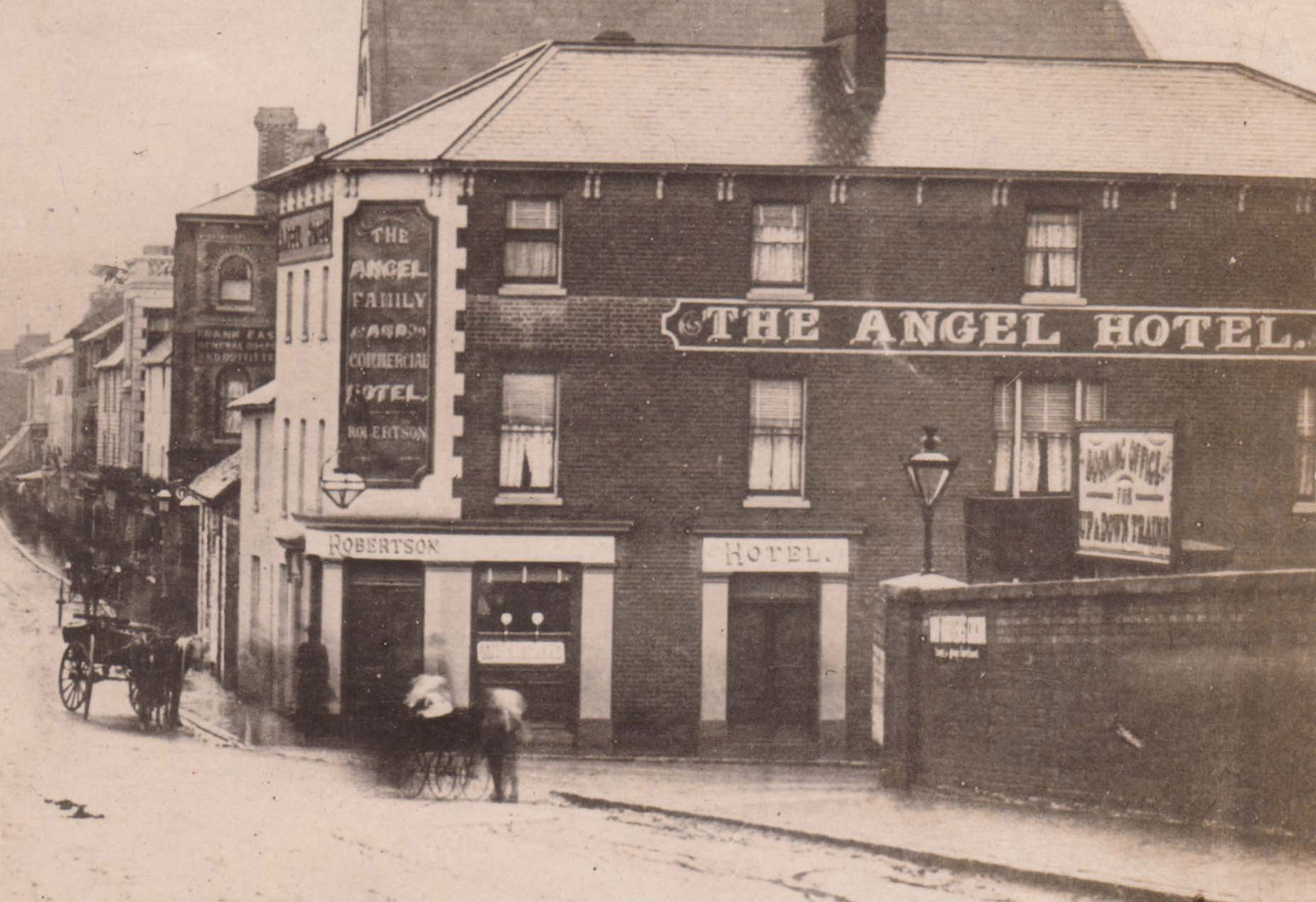1842: a criminal caught
The Victorians had a ghoulish fascination with what one of them called a
‘stunning good murder’.
One of the most notorious examples was the celebrated Roehampton
case of 1842, part of whose drama took place in Tonbridge. The story began with
the theft of a pair of trousers in Wandsworth, reached a climax with a
murderer’s apprehension on a Tonbridge building site, and ended with his death
on the gallows at Newgate. The ineptitude of the Metropolitan Police in pursuing
the case led directly to the establishment of a specialist Detective Department
with its headquarters at Scotland Yard.
Every detail of the ‘most frightful and appalling crime’ at Roehampton was
described in The Times newspaper, whose lengthy reports form the basis
for this account*.
A gruesome discovery
On 7th April 1842, a man identified as Mr Daniel Good was spotted
making off with a pair of trousers, snatched from the counter of a Pawnbrokers’
shop in Wandsworth High Street. A police constable was called and went, with
others, to a substantial house in nearby Roehampton, where Good was known to be
employed as coachman. A search of the stables there was begun, in the presence
of Good himself and some other men. This revealed, beneath some hay, not the
missing trousers, but a limbless, headless female human torso. At the moment of this
discovery, Good ran out of the stable door and locked it behind him, leaving the
hapless policeman and his companions trapped inside. By the time they managed to
break out and raise the alarm, Daniel Good had fled.
A description of Good was circulated – Irish, age about 46, sallow
complexion, bald patch – and a manhunt ensued, but after a few alleged sightings
the trail went cold. Meanwhile, remarkably, the grisly remains, now identified
as those of a woman with whom Good had been living, were on public display in
the stable where they had been found. According to The Times, ‘Vehicles
of every description, from the aristocratic carriage to the costermonger’s cart,
were seen wending their way towards the scene of the awful tragedy’. Among the
many who ‘glutted their curiosity’ at the scene ‘were, we regret to state,
numerous females, some of whom, we doubt not, would aspire to be considered
respectable women’.
A murderer at large in the town

The Bull public house where Good spent his first night in Tonbridge. Peacocks shop now occupies the site. (THS 14A.110)
A week later the focus of attention switched to Tonbridge. Two days after the
murder, it transpired, Good had come down from London on a fish-van (on its way empty back
to the coast to collect another load for the London fish market) and spent a night
at the Bull public-house in the High Street. He
gave his name there as James Connor. Next day he moved to lodgings at the nearby
basket-makers, where the landlady, Mrs Audrey, later reported him to be prone to
pace about the house, extremely anxious whenever anyone came to the door, and
‘much disturbed at night’.
There was no shortage of construction work in
Tonbridge at this time, since the railway was due to open the following month,
and cottages for railway employees were being erected near the station. ‘Connor’
was soon taken on as a brick-layer.
What happened next was, from the murderer’s point of view, pure mischance. It
turned out that one of the men working as a builder near the station had previously served as
a policeman in Wandsworth, and had come across Daniel Good there. After a while this man
realised that Connor was actually the wanted murderer and alerted the superintendent of the South Eastern
Railway police in Tonbridge, Mr Humphrey.

The Angel Inn, on the corner of Vale Road and the High Street, to which the murderer was lured prior to his arrest (THS 14A.122
As soon as he saw Humphrey, who was in uniform, Connor began to act
suspiciously. Nevertheless when the superintendent complimented him on his hard
work and invited him over to the Angel
Inn for a pint of ale, Connor
replied ’Thankee, Sir, I will’. Seated by the fire in the Inn, Connor removed
his cap, revealing the bald patch beneath. Humphrey saw that the man’s
description exactly matched what he had read in the Police Gazette, and the
wanted man was formally taken into custody. He later appeared before the local
Magistrate, Mr Hare, at the office of his clerk, Mr Scoones, in East Street,
before being despatched in handcuffs to Maidstone gaol.
News of the arrest spread fast. As soon as it reached London, The Times
sent a reporter down to Tonbridge. He found ‘persons of all classes flocking in from
Tunbridge Wells and the adjacent villages ... To many the Bull public house, the
residence of Mrs Audrey, and the erections at which the prisoner worked, were
objects of no small attraction’.
Justice is done
The trial of the ‘inhuman monster, Daniel Good’ in London on 13th May 1842
lasted just one day, and the jury only took half an hour to find him guilty. The
judge then donned the black cap and sentenced him to be ‘hung by the neck until
you are dead’. The execution took place a week later in front of Newgate
prison, where the murderer met his end ‘assailed with the most hideous yells and
long-continued execrations by the mob’. Whether any of them were Tonbridge
people is not known.
*The Times reports can be found in full in the Times Digital Archive,
available free to anyone with a Kent Library reader’s card on
http://infotrac.galegroup.com/itweb/kccl .
▲Top


